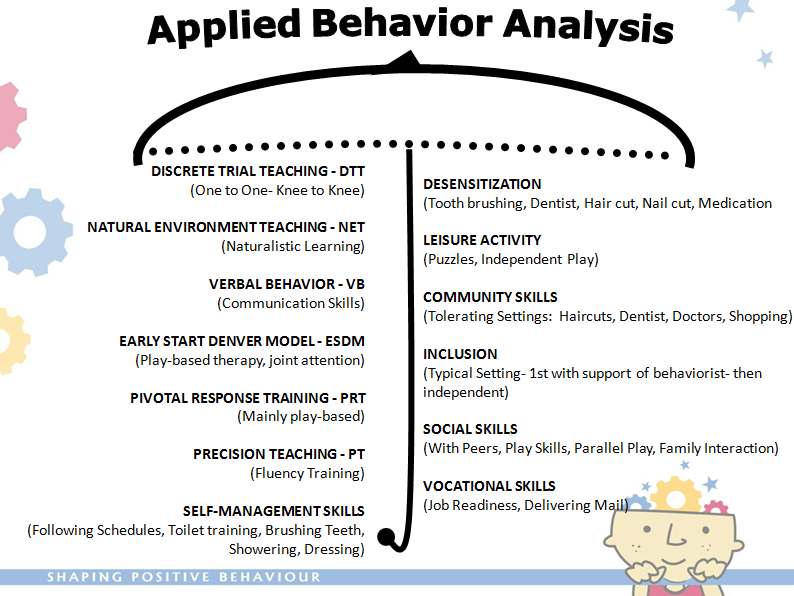 I thought I’d address some of what I’ve been hearing lately:
I thought I’d address some of what I’ve been hearing lately:
“Do you offer ABA or IBI?” (from a parent)
“I don’t do ABA, I do PRT” (from a professional)
For some reason, ABA is FULL of acronyms. This can seem daunting to someone unfamiliar with the field. First, a glossary:
ABA Acronyms & Initialisms:
ABA – Applied Behaviour Analysis
IBI – Intensive Behavioural Intervention
DTT – Discrete Trial Teaching
NET – Natural Environment Teaching
VB – Verbal Behaviour
PRT – Pivotal Response Training
ESDM – Early Start Denver Model
ABLLS – Assessment of Basic Language and Living Skills
VB MAPP – Verbal Behaviour Milestones Assessment and Placement Program
Here is how I think of ABA:
ABA is the set of principles that are implemented in different ways in the different models. IBI stands for Intensive Behaviour Intervention which just means that ABA is applied in an intense way (eg: more than 20 hours per week).
So how do we know which method to use when?
Disclaimer: A good program should consist of the best features of all of these approaches. Don’t get stuck with needing to adhere to one model because no 2 students are the same. What works for one may not work for another. Or what works to teach manding may not work to teach tacting.
When just starting out with a beginner learner, the program will mostly consist of NET (see glossary), requesting (VB), joint attention. The ESDM approach is really great for this. The VB MAPP is a useful tool for the early learner since it is age-normed and we can track development. Check out Daily Activities To Promote Language
Once a student has some joint attention and is able to attend for longer period of time, I put in some table work or discrete trial training. This doesn’t mean the child is screaming and crying while attached to a table and chair. It should still be fun! What it does mean, is that we are using discrete trials to get in as many learning trials as possible in the amount of time that we have. The more learning trials the better!! I would still intersperse table with play and NET, especially for early learners.
As learners progress, I may include some self-management skills and social skills to the program. Community and living skills are key and should be included at every point with input from parents and teachers as to what the appropriate teaching targets are – eg: toileting vs, street safety.
ABA is only as good as how it’s applied – let’s disseminate high-quality ABA!!

I m special educationist need to learn more about practical implementation of different types and stages of ABA therapy for children with Intellectuall disability like ADHD, ASD.
Your support will be a a gem for me
Pingback: Debunking The Myth: ABA Is Not Just For Autism - How to ABA